© Copyright 1995 by Keith Clayton & Barbara Frey
Paper presented at MPA, Chicago, May, 1995
A Nonlinear Dynamics Approach to Studying Short-Term Memory
Vanderbilt University
301 Wilson Hall, Nashville, TN, 37240
telephone: (615) 322-0060 fax: (615) 343-8349
Here is the central thesis of this paper. If time series data are
the result of a nonlinear dynamic system, then techniques are available for
estimating the number of dynamic variables that produced the data. We
recommend an experimental paradigm in which the independent variables
are those known to influence performance, and the dependent variables are
estimates of dimensionality. This paradigm allows us to investigate
whether the independent variable is influencing a dynamic variable, one
that changes in time, or is affecting a relatively constant system parameter.
We apply this paradigm to some memory data here, but we offer it as a
general experimental paradigm. That's the message. The rest of this paper
is devoted to details of definition, illustration, and a brief discussion of
limitations.
What do we mean by a dynamic model? A dynamic model is any
model for which some measure x changes over time according to
an explicit function. A nonlinear dynamic model is simply one for which the
equation specifying the change is not linear. The simplest example of a
discrete nonlinear model is the logistic map, for which x changes
from time n to time n+1 according to:
 The logistic map is often used to introduce chaos concepts because, for
certain values of the parameter r, the resulting dynamics display
all the features of a chaotic system. It is important to stress that nonlinearity
refers not to the behavior of x over n, but to the relation of x_n and x_(n+1).
The logistic map is often used to introduce chaos concepts because, for
certain values of the parameter r, the resulting dynamics display
all the features of a chaotic system. It is important to stress that nonlinearity
refers not to the behavior of x over n, but to the relation of x_n and x_(n+1).
An unattractive feature of nonlinear models is their resistance
to solution by formal analysis. On the other hand, recent work has yielded
a number of geometric regularities and useful techniques for characterizing
these systems and for discriminating them from other systems.
A compelling feature of nonlinear systems is that even simple systems,
such as the logistic map, produce behavior that is difficult to distinguish
from random behavior. This is illustrated in the Figure 1, which shows a
time series produced when r equals 4 and compares it with truly random
data.
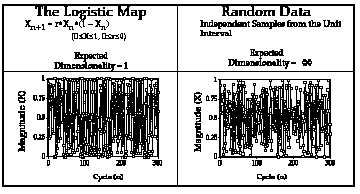 Figure 1 Behavior of the Logistic map and Random Data.
We take this apparently random behavior as a potential challenge to the
conventional view of variability. The conventional view is that measures
are the linear sum of true scores plus noisy "error", which in turn is the
result of the contribution of a very large number of independent factors.
The new insight is that seemingly random variability in measures over
time can result from very simple deterministic systems.
Figure 1 Behavior of the Logistic map and Random Data.
We take this apparently random behavior as a potential challenge to the
conventional view of variability. The conventional view is that measures
are the linear sum of true scores plus noisy "error", which in turn is the
result of the contribution of a very large number of independent factors.
The new insight is that seemingly random variability in measures over
time can result from very simple deterministic systems.
We use the term dynamic variable to refer to variables that change over
time, to be distinguished from parameters which do not. In the logistic map
example, x is a dynamic variable and r is a parameter. More generally, a
dynamic system is a set of functions representing N inputs and N outputs.
For example, a discrete system would be represented by a set of N difference
equations:
 where x_i are dynamic variables and parameters are indexed by p_i. More
simply: dynamic variables are indexed by time, parameters are not. There
are N variables and K parameters. Notice that the dynamic variables are
"coupled", which means that change in one depends on the current value
of the other.
where x_i are dynamic variables and parameters are indexed by p_i. More
simply: dynamic variables are indexed by time, parameters are not. There
are N variables and K parameters. Notice that the dynamic variables are
"coupled", which means that change in one depends on the current value
of the other.
The number of dynamic variables of a system is known as the
dimensionality of the system. The logistic map, for example, has
dimensionality equal to one. An example of a two-dimensional dynamic
system (Clayton & Frey, in press) is shown next.
 This model, similar to one suggested by van Geert (1991), has two
dynamic variables, x and y, competing for growth according to growth
parameters r_x and r_y but limited in magnitude by carrying capacity K.
Here there are two dynamic variables and four parameters. The model also
illustrates why we think that memory performance may be profitably
modeled by a nonlinear system. Memory typically involves competition,
and is limited in capacity, at least in working memory. The result is that the
dynamic variables are "coupled" and growth is bounded. In addition to the
van Geert work already cited, in recent years dynamic models have been
proposed across psychology. See the reference list for a partial listing of this
new work.
This model, similar to one suggested by van Geert (1991), has two
dynamic variables, x and y, competing for growth according to growth
parameters r_x and r_y but limited in magnitude by carrying capacity K.
Here there are two dynamic variables and four parameters. The model also
illustrates why we think that memory performance may be profitably
modeled by a nonlinear system. Memory typically involves competition,
and is limited in capacity, at least in working memory. The result is that the
dynamic variables are "coupled" and growth is bounded. In addition to the
van Geert work already cited, in recent years dynamic models have been
proposed across psychology. See the reference list for a partial listing of this
new work.
One of the remarkable recent achievements in the study of nonlinear
dynamics is the development of techniques for estimating dimensionality
from measures on a single variable. Such techniques could be enormously
useful to the model builder because they estimate the total number of
dynamic variables needed to model the dependent variable.
How is this possible? The major technique involves the embedding
dimension, which is defined in terms of successive N-tuples of the time
series data. Consider, for example, the first seven values of the logistic map
data plotted earlier.
0.10, 0.36, 0.92, 0.30, 0.84, 0.54, 0.99. ...
For an embedding dimension of two, the resulting pairs are
(0.10, 0.36), (0.36, 0.92), (0.92, 0.30), (0.30, 0.84), (0.84, 0.54), (0.54, 0.99), ...
For an embedding dimension of three, the triplets are
(0.10, 0.36, 0.92), (0.36, 0.92, 0.30), (0.92, 0.30, 0.84), (0.30, 0.84, 0.54), ...
These successive N-tuples are treated as vectors, or points, in N-
dimensional space, and it is the geometric structure of these points that is of
interest. To illustrate their utility, suppose we embed the time series from
the logistic map in two dimensions and plot the points in 2-space. Figure 2
shows the result. We see that the underlying structure of a system
producing seemingly random data is fully revealed by embedding the data
in two dimensions.
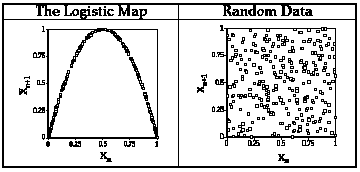
Figure 2. Return map drawn for the first 300 trials
of the Logistic map, r=4, and random data.
Techniques for estimating dimensionality, in general, involve distances
among the points in the embedding dimensions. And the central idea is
that certain properties of these distances will change as the embedding
dimension increases, but only so long as the embedding dimension is less
than the dimensionality of the data. In the particular technique developed
by Grassberger and Procaccio (1983a,b), which rapidly became widely used in
other sciences, for each embedding dimension the proportion of distances
that are less than a given distance, or radius, r are calculated. This value is
called the correlation integral, Cr(I), and the linear portion of the function
relating log[Cr(I)] to log(r) is used to estimate the correlation dimension for
that embedding dimension.
The next figure illustrates the technique applied to data from the logistic
map and from data generated as white noise.
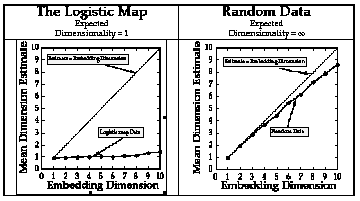
Figure 3. Estimates of correlation dimension as a
function of embedding dimension for
logistic map and white noise data.
Plotted here are dimension estimates as a function of embedding
dimension. The logic is this. As long as dimensionality exceeds the
embedding dimension, the estimate will equal the embedding dimension.
Since white noise has infinite dimensionality, estimates should
continuously equal the embedding dimension, as they are seen to do. The
logistic map data, however, are the result of a one-dimensional system and
should not rise beyond an embedding of one. In general, then, we look to
see whether and where this function levels off, or "saturates" as reaching an
asymptote is called.
Now, we argue, the ability to estimate the dimensionality of data
arising from a given experimental condition invites a new paradigm in
which the relationship between independent variables and dimensionality
are investigated. The initial logic is this: if the independent variable
influences both the dependent variable and the dimensionality estimate, its
influence arises from its effect on a dynamic variable. If, however, the
independent variable influences the dependent variable but not
dimensionality, then its effect is on a parameter. The possible results are
summarized in the next table.
Outcome: Interpretation
No effect of IV: Parameter effect only
Effect of IV: Dynamic variable effect, possible parameter effect
One limitation of this approach may already be apparent. If the estimate of
dimensionality is very large, or too large to estimate, the suitability of the
nonlinear approach would be questioned and the location of the effect of the
independent variable it would be unclear.
We illustrate all of this with the experiment now to be described.
Experiment
Three classification tasks were used, designed to manipulate memory load,
so our major experimental question was whether memory load affects a
dynamic variable or a parameter.
Method
Twelve subjects were each given three classification tasks that differed only
in the response rule. On each trial of each task the stimulus was either an X or
an O. In the X-O task, the subject pressed one key for an X, another for an O.
In the same-different-1 task the subject pressed one key if the stimulus was
the same as the stimulus on the previous trial, otherwise the other key. On
the same-different-2 task, the subject pressed one key if the stimulus was the
same as the stimulus two trials back, otherwise the other key. Each task had
500 uninterrupted trials, with task order counterbalanced across subjects. We
used 500 trials because the planned nonlinear statistics require lengthy time
series.
Reaction time was measured on each trial. In addition, since the subject
determined the intertrial interval by indicating readiness for the next
trial, it occurred to us that the interesting temporal dynamics may be in this
subject-determined delay. The subjects were encouraged to develop a strategy
to prepare for the next trial, and this interval, too, was measured.
Results
The next figures display the obtained data using the standard plot of
dependent variables vs. independent variables, and show the expected effect
for both. Both response times and trial-initiation times increased significantly
with increased memory load, being fastest for the simple X-O task, slowest for
the task requiring memory for the last two trials.
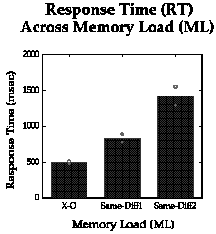
Figure 4a. Mean latencies (msec) for response
time across increasing memory load.
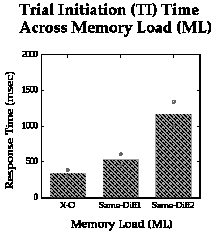
Figure 4b. Mean latencies (msec) for trial
initiation across increasing memory load.
That's the standard analysis. Now we treat the data as a time series and
examine the effect of memory load on our new measure, dimensionality.
Analyses of variance on Grassberger-Procaccia estimates showed no effect of
memory load. That is, there was no evidence that memory load was affecting
a dynamic variable, despite its substantial effect on response times. There was,
however, also no evidence for low-dimensionality in the response time data.
This is shown in the next figure.
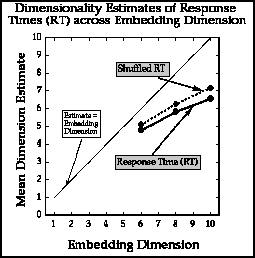
Figure 5. Slope estimates across embedding
dimensions for response times to test
stimulus, shuffled vs. non-shuffled data.
This figure shows estimates from the response time data on the left,
trial-initiation time on the right. Two functions of slope estimates across
embedding dimensions are shown. The solid function is for the obtained
data, the dashed line for the same data randomly shuffled. Shuffled data
should resemble white noise, so shuffling controls against biased estimations.
The technique is similar to the "surrogate data" method. (Theiler, Eubank,
Longtin, Galdrikian, & Farmer, 1992; Theiler, Galdrikian, Longtin, Eubank, &
Farmer,1992; Kennel & Isabelle, 1993). The response time data show no
evidence of saturating and no difference from the shuffled version.
The story is somewhat different for the trial initiation data shown in
the next figure.
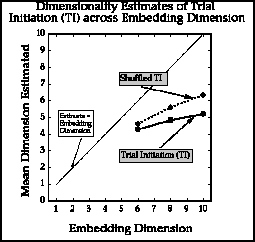
Figure 6. Slope estimates across embedding
dimensions for trial initiation times,
shuffled vs. non-shuffled data.
Here there is a significant difference between the obtained and shuffled
data. There is also a suggestion that dimensionality estimates of the
obtained data levels off, perhaps at a dimensionality of six. Our maximum
embedding dimension is ten here because the reliability of dimension
estimates decrease as embedding dimension increases, especially for short
data sets. So, without using other dimension estimates, which are planned,
we tentatively conclude that low-dimensionality in the time-initiation data is
possible.
In summary, the memory load manipulation produced substantial
effects on response and trial initiation times, but no effects on estimates of
dimensionality. We have used these data to illustrate the potential for an
experimental paradigm that treats dimensionality as a dependenet variable.
Provided dimensionality estimates are low, this technique provides evidence
about whether the independent variable influences a dynamic varaible or a
system parameter.
Finally, nonlinear statistical techniques are very much in the
developmental stage Several approaches have been suggested, and recent
reviews of the strengths and weaknesses of the techniques are to be found in
Abarbanel, Brown, Sidorowich, and Tsimring (1993), Pritchard and Duke
(1992), Johnson and Dooley (1994), and Rapp (1995).
References
Abarbanel, H. D. I., Brown, R., Sidorowich, J. J. & Tsimring, L. S. (1993).
The analysis of observed chaotic data in physical systems. Reviews
of Modern Physics, 65, 1331-1392.
Clayton, K. & Frey, B. (In press). Inter- and intra-trial dynamics in memory
and choice. In J. Goldstein & A. Coombs (Eds.), Chaos Psychology: A
Reader. Vol 2.
Cooney, J. B. & Troyer, R. (1994). A dynamic model of reaction time in a
short-term memory task. Journal of Experimental Child
Psychology, 58, 200-226.
Grassberger, P., & Procaccia, I. (1983a). Characterization of strange
attractors. Physical Review Letters, 50, 346-349.
Grassberger, P., & Procaccia, I. (1983b). Measuring the strangeness of
strange attractors, Physica D, 9, 189-208.
Hoyert, M. S. (1992). Order and chaos in fixed-interval schedules of
reinforcement. Journal of the Experimental Analysis of Behavior,
57, 339-363.
Pritchard, W. S. & Duke, D. W. (1992). Measuring chaos in the brain: A
tutorial review of nonlinear dynamical EEG analysis. International
Journal of Neuroscience, 67, 31-80.
Townsend, J. T. (1992b). Chaos theory: A brief tutorial and discussion.
Ch. 4 in A. F. Healy, S. M. Kosslyn, & R. M. Shiffrin (Eds.) From
Learning Theory to Connectionist Theory: Essays in Honor of William
K. Estes, V.1. Hillsdale NJ: L. Erlbaum Assoc. pp.65-96.
van Geert, P. (1991). A dynamic systems model of cognitive and language
growth. Psychological Review, 98, 3-53.
URL:http://www.vanderbilt.edu/AnS/psychology/cogsci/clayton/papers/MPA95/MPA95.html